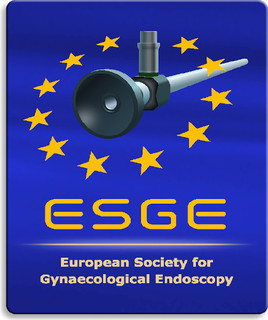It is truly a sentimental journey which has led to my participation in a very small way in Facts,Views & Vision in ObGyn.
Not only do I count as friends many low country colleagues “past and present” but I came to know parts of the low countries, village by village, during the winter of 1944-45 as a U.S. Army surgeon caring for the seriously wounded during World War II.
This time span qualifies me to give a view from afar, regardless of its merit.
The purpose of FF&V was beautifully set forth by Jan Gerris in an editorial to the first issue of FV&V. All readers would benefit by a rereading of this from time to time. This is easy to do as this journal is easily accessible at www.fvvo.eu
And now three views from afar.
With modern electronic communications, attendance at intimate specialized scientific meetings has decreased. The surviving large meetings are short on time for discussion. This view from afar sees an opportunity for FV&V to use its electronic capability to emphasize its mission for discussion of recent articles in the journal. It is discussion of any subject that makes practicality and applicability. To that end, there is a point of discussion about the proliferation of the simplification, i.e., shortcuts, to the diagnosis and treatment of infertility. For example, “One-stop” Fertility Assessment Using Advanced Ultrasound Technology by Hrehorcak and Nargund from the January-March 2011 issue of FV&V. From the point of view of service to the masses such an approach has the advantage of economy of time and treasure. However, with this approach there well might be an outlier or two who requires more than a one-step investigation. In addition, if we can imagine a world totally committed to “one-stop” for the next decade, diagnostically the world of infertility diagnosis would still be exactly where it is today a decade hence. One-stop surely has its place in the service sector. However, there is also every reason to have comprehensive centers so that we can constantly improve. Traditionally, this is the role of the academic community, but in these times it is entirely possible that private centers would be financially structured in a better way to assume this role. There is every reason to hope that comprehensive centers will flourish.
I also like to comment on the review of Sergio Oehninger on poor responders in this issue of FV&V. A read- ing will convey to you everything that there is to know about poor responders. Of special interest is the section on the etiology of poor ovarian response in younger patients. Much work has been done and some associations (causes?) are described which might possibly explain the cause of the poor response. Some are general associations, for example, altered germ cell apoptosis; others are more specific, as for example, mutations of Gdf-9, connexin 37, FSH and LH receptors and alternation in the secretion of FSH-β.
However, current therapy is “one size fits all”. We have not yet reached the stage either in this particular situation or in many other situations where genetic associations have been made that were are able to take advantage of these associations and have a rifle-like shot of therapy, rather we still struggle along with using gunshot therapy hoping that we can improve the problem. As mentioned, this comment, criticism if you will, of the relation of therapy to the etiology is of general application. There are hundreds and hundreds of genetic mutations which have been associated with various conditions and yet I am unaware of any therapy which directs itself at correction this mutation or even jumping over it to supply what the mutation has denied the physiological process. I suppose we can only hope that with continued work, we will finally get there, but regrettably we are not there yet.
The third view from afar focuses on the fact that the reproductive sciences have more interface with society than other medical specialties. The quantity and quality of mankind as it is renewed passes through the hands and minds of all of us and could be modulated by our council and action. Therefore, Facts, Views and Vision in ObGyn is to be encouraged to emphasize discussion of these societal interfaces. In the field of human reproduction possible topics might be:
- The relation of health insurance to reproductive outcome
- The influence of societal, particularly religious dogma on reproduction
- Reproduction and the law
- Gamete donor anonymity etc.
FV&V is a paragon of 21st century communication. In addition to new information, emphasis on discussion and the social interface makes it special while it strives to put related subspecialties in orbit around the star named reproduction.
Howard W. Jones, Jr Honorary Member of the Editorial Board



